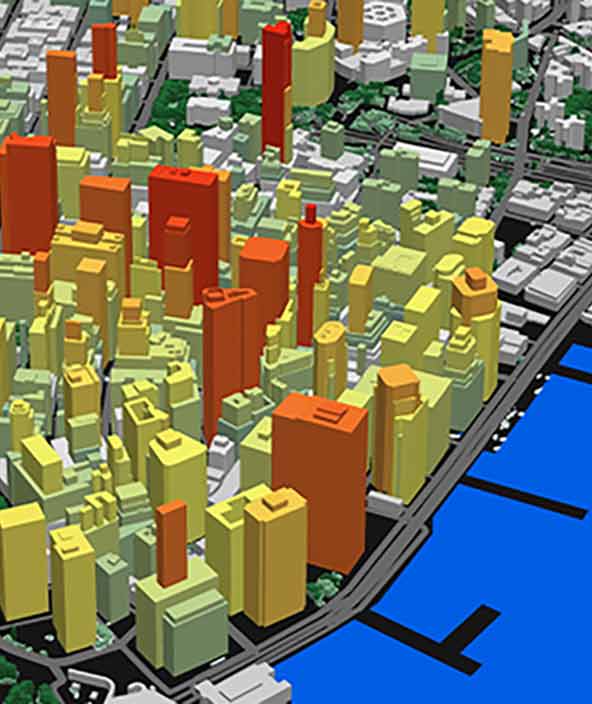
EPB’s Smart Grid generates $2.7 billion in community benefit in first decade
Discover how Hexagon’s cities and nations solutions helped EPB drive value in public utilities.
Company: EPB of Chattanooga, a city-owned electric power distribution and telecommunications company in Chattanooga, Tennessee, USA
Challenge: Update infrastructure and services to meet the future needs of customers and the business
Solution: An advanced utility GIS for electric and fibre network design, engineering and management
Results: Improved customer service, reliability and connectivity from deployment of fibre, smart grid and automated metering infrastructure

Established in Chattanooga, Tennessee in 1935, EPB is one of the largest publicly owned providers of electric power in the United States. The city-owned distribution and telecommunications company provides power to consumers in the greater Chattanooga area.
When planning for the future needs of its customers as well as the business, the company decided to modernise the EPB electric system into a smart grid by adding sensors and monitoring devices to the existing electrical distribution network.
EPB searched for a smart grid based on a fibre optic communications infrastructure that could deliver state-of-the-art communications services to residences and businesses. In order to connect fibre to the home — and later provide advanced communications services, such as broadband and video, to its customers — EPB needed to design fibre routes and monitor the connectivity of the best route for the most customers.
The company also needed an electric system that would better allow it to have more control over energy-use management as well as identify and restore power during outages more quickly.

Finding the solution
When it was time to choose a partner, EPB was familiar with Hexagon. “We were already using G/technology to map our power system,” says Jason Sauls, Application Systems Analyst, EPB.
EPB decided to leverage the same technology with add-on features for its fibre optic model, as the models share many of the same data elements. “It was just a natural fit us to stay with the Intergraph product,” says Sauls.
EPB implemented its Fibre to the Home (FTTH) project in 2009 by adding fibre enhancements to Hexagon’s electric model. Developed by Hexagon’s utility GIS solution, the infrastructure is shared with FTTH operations and billing system to support automatic provisioning of the optical network terminals at the customer premise.
The FTTH infrastructure project was completed with the installation of 90 miles of transport fibre, 800 miles of feeder fibre and 3,200 miles of distribution fibre.
Seeing results
In September 2010, EPB became the first company in the United States to offer one gigabit-per-second internet speed — a critical component of next-generation technology innovation and economic development. This exclusive capability attracted worldwide attention and earned Chattanooga the nickname “Gig City.”
As part of the smart grid project, EPB also installed 1,170 automated interruptible switches (intellirupters). The company uses Hexagon technology to model these intellirupters as part of the electric and fibre optic network and serves as a source in the development of the “teaming” configuration for each device. A 2012 tornado event demonstrated the ability of the smart grid to respond to outages by automatically restoring power to many of the 3,600 affected homes.
Since installing their smart grid, EPB has been recognised by several prestigious organisations for its superior customer service. In 2016, Consumer Reports named EPB the best utility in America for consumer satisfaction for its TV and internet service, and J.D. Power has found the company to be the highest-ranked in the Electric Utility Residential Customer Satisfaction Study (South Midsize Segment) for five years in a row.
“Smaller companies like us, you don't really expect to get a J.D. Powers type award,” says Sauls. “That was big.”
In addition, a 2021 independent study of EPB’s smart grid showed $2.7 billion in community benefit during the grid’s first ten years of life. The study cited lower unemployment, job creation, decreased power outages, less environmental damage and smart city research funding as contributors. The study also stated the grid’s role in accommodating a 75% increase in internet bandwidth usage per day during the COVID-19 pandemic.
When asked what advice Sauls would give to utilities and communication networks who were interested in moving to a fibre-based broadband system, his answer was clear. “Making sure all that automation works, the data integrity is there and all your systems are clicking at the right level is important for … building a network,” he says.




